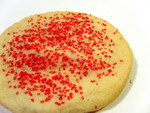Roast beef is a wonderful meal. It’s juicy, tender, and full of flavor. But cooking roast beef can be a bit scary if you don’t know how to do it. Beef roasts aren’t the cheapest cut, so you want to make sure it comes out perfect!Roast beef is usually the center of a special meal, like a Sunday dinner with the family or a get-together with friends. That adds to the pressure, doesn’t it? No one wants to serve a burnt roast on a special occasion.
Wondering how to cook roast beef? Well, I’ve got good news for you. Cooking roast beef is actually surprisingly easy. Just follow a few simple guidelines and you’ll end up with a perfect roast beef every time!
In this article I’ll go through all the steps of making roast beef. First, I’ll talk about selecting the right cut of beef for roasting. To get the best possible results, you need the right ingredients! Then, I’ll talk about seasoning the beef. Lastly, I’ll go over three different ways of cooking roast beef. Each method gives different results, so be sure to pick the right one for you!
Here we go!
Step 1: Selecting a Cut of Beef
Cooking roast beef is just like any other cooking method. If you want great results, you have to start with the right cut of beef.
Roasting is a dry heat cooking technique. The meat would burn before it got hot enough to melt collagen down to gelatin, so you need to start with a tender cut of beef.
You also want to have a bit of fat in the meat. The fat melts and bastes the meat while it’s roasting, so you end up with a juicier meal. A cut with some marbling and a thick layer of fat (a quarter of an inch to an inch) on one side is just about perfect.
So what are you looking for? Large, tender cuts with a decent amount of fat on them. Here are a few good cuts to pick for roast beef:
- Cuts from the rib. Try prime rib or a rib-eye roast.
- Cuts from the loin. Strip loin, top sirloin and tenderloin roasts are especially tender, but sirloin tip and tri-tips roasts are tender enough for cooking roast beef, too.
- Cuts from the round. Be sure to pick the more tender round cuts. You can use eye of round, inside round, outside round, top round or rump roasts. These aren’t as tender as the rib and loin cuts, but they usually aren’t quite as expensive, either.
Step 2: Seasoning the Beef
Beef is pretty delicious and flavorful all on its own. If you want, you can stick to just plain old salt and pepper when cooking roast beef. You’ll still end up with a fantastic meal. But there are other great ways to season a roast that add a bit more flavor. I’ll go over two ways to season the beef, a spice rub and a seasoned paste.
Spice Rub
The simplest way to season your beef roast is to make a spice rub. A spice rub is just a mixture of spices that you rub into the meat before cooking it.
The two main ingredients in a spice rub are salt and sugar. Salt is there for the flavor. Sugar is there to help caramelize the meat – it’ll give the meat a wonderful golden brown color.
Apart from salt and sugar, you can add just about anything you like to a spice rub. You don’t even need to stick to the sugar/salt base, if you don’t want.
Really, the only thing to worry about is putting in flavors that you like. Try dried or crushed garlic, onion powder, oregano, Cajun seasoning, thyme, rosemary, chili powder, or any other spices you like.
Once you have a spice rub ready to go, the next step is to rub it into the meat. It’ll be easier if the meat is a little bit moist, so you don’t have to pat it dry.
A spice rub works best if you get an even coating all over the roast. The thicker the coating, the more of a crust it will make when you cook the roast beef. If you like a good thick crust, you can even add some breadcrumbs to the rub.
Rubbing a Paste
A paste is a lot like a spice rub, except that you add a wet ingredient to it. That makes it easier to spread on the roast. You can add oil, butter or margarine, mustard, molasses, or anything you like. Just make sure that it’s thick enough to stick to the meat. Mix all your spices and the wet ingredient, then spread it evenly over the roast. That’s it!
Step 3: Cooking
There are a few different ways of cooking roast beef. Some people will tell you that the right way of doing it is this way or that way, but really, the only thing you should worry about is which way you like best.
No matter which method you pick for cooking roast beef, there are a few things you should do:
- Let the beef reach room temperature before cooking it. If you don’t, it won’t cook evenly. Season the meat, then leave it out for about an hour – it’ll give your seasonings time to sink in, too. Be careful though. If it’s very hot, leaving the meat out for too long isn’t safe. Use your best judgement here. You want the beef to lose the refrigerator chill, but you don’t want it out too long, or bacteria will start to grow.
- When cooking roast beef, you don’t want it sitting in its own juices, and you want it to cook evenly all around. The best way to cook roast beef is to have it sitting directly on the oven rack, with a tray underneath to catch the drippings. I know, it sounds like a hassle, but it creates air flow all around the roast which helps it cook evenly. If you don’t feel like having to clean the oven rack, a shallow roasting pan with a rack works too. It keeps the roast out of its own juices, but it doesn’t create quite as nice an air flow, especially if the edges are on the high side.
- A good way to keep the meat moist is to baste it. Be sure to baste it in its own juices every 15 to 20 minutes. It’ll keep the outside moist and prevent it from burning. If you have a layer of fat on the meat, place that on the top when you put your roast on the rack. That way, when the fat starts to melt, it’ll baste your roast for you!
-
Use a meat thermometer. The only way to tell if a roast is done is with a thermometer. You can estimate how many minutes per pound you need, but the truth is that the cut of beef, its shape, and your oven’s own little quirks make those estimates just a best guess. A meat thermometer makes sure you get it at just the right doneness. Just insert it into the center of the thickest part of the roast. Make sure it doesn’t touch any bone, though, because that can affect the reading. Here are the temperatures for cooking roast beef:
- Rare: 125 F
- Medium Rare: 130F to 140F
- Medium: 145F to 150F
- Well done: 155F to 165F
It’s worth mentioning that the USDA recommends that beef be cooked to 145F to be completely safe. If you’re worried about food-borne illnesses, it might be best to settle for a medium cooked roast beef.
Method 1: Slow cooking roast beef
Want to know how to cook roast beef that’s evenly cooked the whole way through? Slow cooking roast beef is the best way to do it. Whether you want it rare, medium rare, or well-done, slow cooking will make sure the whole slice has the right doneness for you.
The catch? It’s slow! Slow cooking roast beef can take 4 to 8 hours depending on the size of your roast and how cooked you like it.
It also generally won’t give a nice brown crust around on the outside of the roast. The temperature just isn’t hot enough to brown the meat. If you really want a browned exterior, try Method 2 instead.
Here’s how to slow cook roast beef:
- Cook the beef at 200F until its internal temperature reads 5-10 degrees below the desired doneness. This can take 4 to 8 hours. It depends on the size of the roast and how done you like it.
- Remove it from the oven, and let it stand for 20 minutes. The temperature will keep going up while it stands, so it actually finishes cooking outside the oven.
Method 2: Slow cooking roast beef with a crust
This method lets you get a pretty evenly cooked roast on the inside and a nice crust on the outside. It’s a little bit more work than just slow cooking roast beef though.
If you oven sear your roast to get a browned outside, it takes a while. The oven gets really hot, and the outer edges of the roast cook a little bit too much. You get a nicely browned roast, but your roast won’t be evenly cooked on the inside – a good portion near the edge will be more cooked than you want it. And then it takes time for the oven to cool down, so you’re actually cooking your roast hotter than you need to.
So, what we do in this method is pan-sear the roast quickly enough that the interior doesn’t get much of a chance to cook, and then oven sear it at the end of the cooking time. The meat is already hot, so the outside doesn’t take very long to sear and the inside stays evenly cooked.
Here’s how you do it:
- Heat some oil in a skillet over medium-high or high heat. You want it to be hot enough to sear the beef quickly without cooking too much of the inside. Sear each side of your beef.
- Cook the beef at 200F until its internal temperature reads 25-30 degrees below the desired doneness. This can take 4 to 8 hours depending on the size of the roast, and how cooked you like it.
- Turn the heat up to 500F and cook it until it reaches 5 to 10 degrees below the desired doneness. It shouldn’t take much more than 10-15 minutes.
- Remove the roast from the oven and let it stand about 20 minutes. The temperature will keep going up, so it’ll finish cooking as it stands.
Method 3: Cooking at 350F
What if you want to know how to cook roast beef, but you don’t a whole lot of time?
This method is probably the most convenient one for cooking roast beef if you don’t have all day. It’s also really simple.
Unlike slow cooking, cooking roast beef at 350F lets the oven get hot enough to brown the outside nicely, so there’s no need to pan-sear or oven-sear the roast. It won’t be as evenly cooked as a slow cooked roast though. If you cook it until the center is rare, there might still be meat near the outside that’s medium rare or even well-done.
Here’s how you do it:
- Cook the beef at 350F until its internal temperature reads 5-10 degrees below the desired doneness. It’ll take anywhere from 15 to 30 minutes per pound, depending on the shape of the roast, and how well done you like it.
- Remove the roast from the oven, and let it stand for 20 minutes. The temperature will keep going up while it stands, so it’ll finish cooking outside the oven.
Now that your roast beef is cooked, you’re just about ready to sit down and enjoy a great meal.
Be sure to let the roast stand about 20 minutes before carving (I included that in the cooking instructions, but it’s important so I’m saying it again!). This gives the roast time to finish cooking, but it also lets the juices redistribute through the meat. That’ll make it much easier to carve the meat, and each slice will be perfectly evenly juicy. Yum!
Well, now you know all about cooking roast beef!
All that’s left is to slice the roast, serve with your favorite sides and enjoy!





